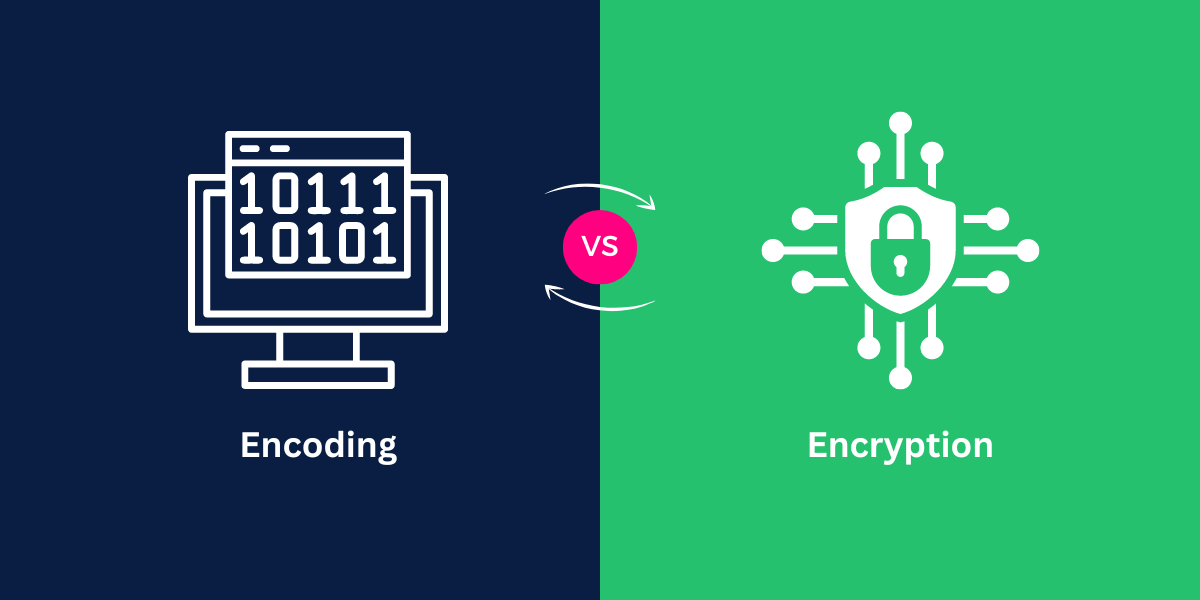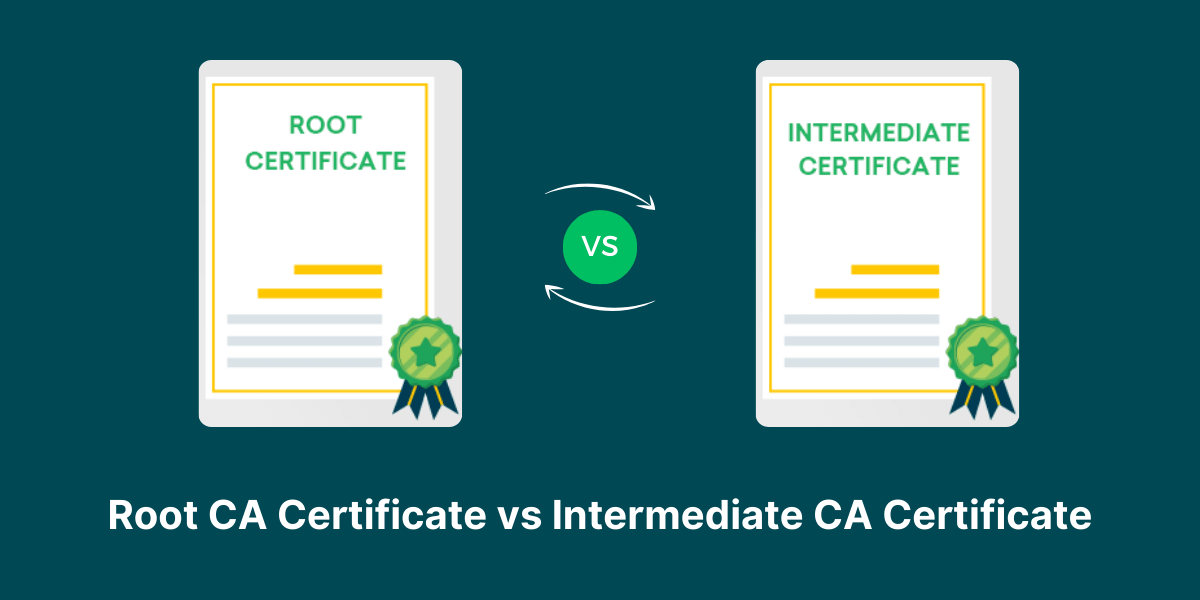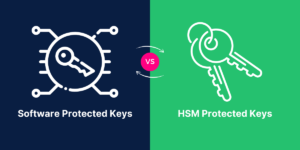Know the Difference Between Encoding and Encryption
Encoding and encryption are two techniques for transforming data into another format. While they seem similar on the surface, there are some key differences between them. This article will provide a detailed explanation of encoding vs. encryption, when to use each, and some examples of different encoding and encryption methods. Understanding the nuances between these two data transformation techniques can help ensure you apply the right one for your use case.
Key Takeaways
- Encoding transforms data into another format that can be reversed, while encryption scrambles data into an unreadable format that requires a key to decrypt.
- Encoding is mainly used to convert data so it can be properly transmitted or stored, while encryption is used to protect sensitive data securely.
- Common encoding methods include ASCII, Unicode, URL encoding, Base64, etc. Common encryption methods include AES, Blowfish, RSA, etc.
- Encoding maintains data readability, but encryption makes data unreadable without the proper key. Encoding can be reversed without a key, but encryption cannot.
- Encoding is used when data needs to be converted to meet transmission, storage, or display requirements, and encryption is used to protect confidential data securely.
Head-to-Head Comparison Between Encoding vs Encryption
| Feature | Encoding | Encryption |
| Purpose | Encoding is used to represent data in a format that can be transmitted or stored more efficiently. | Encryption is used to protect data from unauthorized access by transforming it into a format that is unreadable without a decryption key. |
| Reversibility | Encoding is a reversible process, meaning the original data can be recovered from the encoded data. | Encryption is a reversible process, but the original data can only be recovered with the correct decryption key. |
| Security Level | Encoding does not provide any significant level of security, as the encoded data can be easily decoded by anyone with access to the encoding algorithm. | Encryption provides a high level of security, as the encrypted data is practically unreadable without the decryption key. |
| Algorithms | Encoding algorithms are generally simpler and more straightforward, such as Base64 or ASCII. | Encryption algorithms are more complex and include symmetric-key algorithms (e.g., AES) and asymmetric-key algorithms (e.g., RSA). |
| Key Management | Encoding does not require any key management, as the encoding algorithm is usually known. | Encryption requires careful key management, as the decryption key must be kept secure and shared only with authorized parties. |
| Data Integrity | Encoding does not provide any guarantee of data integrity, as the encoded data can be easily modified. | Encryption can provide data integrity, as any modification to the encrypted data will be detected during decryption. |
| Performance | Encoding is generally faster and more efficient than encryption, as the encoding process is simpler. | Encryption is more computationally intensive, as it involves complex mathematical operations to transform the data. |
| Use Cases | Encoding is commonly used in web development (e.g., Base64 encoding for images), email (e.g., Base64 encoding for attachments), and data transmission (e.g., ASCII encoding for text). | Encryption is commonly used in secure communication (e.g., HTTPS), file/disk encryption, and secure data storage. |
| Standards | Encoding is often standardized, with well-known and widely-used algorithms. | Encryption is also standardized, with various algorithms and protocols defined by organizations like NIST and ISO. |
| Cryptographic Properties | Encoding does not provide any cryptographic properties, such as confidentiality, integrity, or non-repudiation. | Encryption provides cryptographic properties, such as confidentiality, integrity, and non-repudiation, depending on the specific algorithm and implementation. |
What is Data Encoding?
Data encoding refers to converting data from one format into another to meet certain requirements. The encoded data can be reversed back to its original format without the need for secret keys or passwords.
Here are some common reasons for encoding data:
- To adhere to data format or transmission requirements. For example, encoding Unicode text as ASCII to send it over protocols that only support ASCII.
- Convert data so it can be properly displayed or stored. For example, encode binary data as Base64 so it can be displayed as text.
- To make data smaller and more compact. For example, compressing large files using an algorithm like gzip.
- To obfuscate data but still keep it readable. For example, encoding a URL so it’s less human-readable.
Examples of Common Encoding Methods
- ASCII: Encodes text as numeric values that correspond to alphanumeric characters. Commonly used for text transmission over networks.
- Unicode Encodes text consistently across different languages and scripts. It also allows support for emojis, foreign languages, etc.
- URL Encoding: Encodes characters in URLs that have special meanings, like spaces or slashes. Allows these characters to be transmitted properly.
- Base64: Encodes binary data as text using 64 ASCII characters. Commonly used to send binary files through media designed for text.
- Gzip/Zip: Compresses data using a deflate algorithm to reduce file sizes for transmission or storage.
The key thing to note is that encoding is designed to make data transportable rather than keeping it secure. Encoded data can always be reversed or decoded back into its original form if you know the encoding method used.
What is Data Encryption?
Data encryption refers to scrambling information to make it unreadable and unintelligible to unauthorized parties. Decryption requires the use of a secret key or password to reverse the encryption and access the original data.
Here are some primary reasons for encrypting data:
- To securely protect confidential or sensitive information. For example, encrypting personal financial records.
- To protect data from being accessed by unauthorized parties. For example, encrypting files before transferring them.
- To comply with data security standards and regulations. For example, encrypting healthcare records to meet HIPAA.
- To protect intellectual property or proprietary code. For example, encrypting source code repositories.
Examples of Common Encryption Methods
- AES (Advanced Encryption Standard): Symmetric key algorithm used by the US government. Very efficient and secure.
- Blowfish: Fast and secure symmetric encryption algorithm. Used for encrypting data like backups.
- RSA: Popular asymmetric encryption algorithm based on factoring large prime numbers. Used for secure transmission.
- Password Hashing: One-way function that scrambles passwords into unreadable hashes for secure storage.
- SSL/TLS: Encryption protocols are used to secure web traffic and transactions over networks. Power HTTPS websites.
The main takeaway is that encrypted data is only readable and reversible with access to the secret encryption key. Encryption is intended to protect data securely, unlike encoding, which just transforms data to a different format.
When to Use Encoding vs Encryption
Now that you understand the core differences, when should you use encoding versus encryption?
Use Encoding When:
- You need to convert data to meet transmission, storage, or display requirements
- The readability of data is important for further processing
- Reversing the encoding is necessary to use the original data
- Optimizing data formatting, size, and usability is the goal
- Send Unicode text over ASCII networks
- Display binary data as ASCII characters
- Compress data to reduce file size
- Obfuscate data but keep it readable
Use Encryption When:
- You need to protect confidential or sensitive information securely
- Preventing unauthorized access to data is critical
- Compliance with security standards like HIPAA is required
- Reversible access to original data should require decryption keys
For example, encrypt to:
- Protect personal financial information
- Secure sensitive data before transfers
- Store passwords, healthcare records, etc. securely
- Protect intellectual property or proprietary source code
Examples of Encoding and Encryption in Action
Let’s look at some applied examples of encoding and encryption to see the differences:
Encoding Example
Pretend you need to send the following Unicode text over an ASCII network:
Hello World! 1234 <html>
You would need to encode it to ASCII values like this:
Hello World! 🌎 1234 <html>
The special characters have been converted to ASCII numeric character references. The data is still fully readable; it is just encoded to meet ASCII transmission requirements.
Encryption Example
Pretend you need to store sensitive financial records in a database securely. Here is some sample data:
Acct# 9283 Name Bob Smith Balance $53,928
You would encrypt it prior to storage using a secure algorithm like AES:
<encrypted data appears here as unintelligible text>
The encrypted data is completely unreadable. It requires the encryption key to decrypt it back to the original financial record for use. This protects its confidentiality.
Encoding and Encryption Methods Compared
To drive the differences home, let’s briefly compare some common methods:
Encoding Methods
- ASCII: Numeric representation of text that computers can process
- Unicode: Expanded character set that supports international text
- URL Encoding: Encodes special characters so URLs transmit properly
- Base64: Allows binary data to be transmitted as ASCII text
Encryption Methods
- Small Key Size: 56-bits is no longer considered adequate. Vulnerable to brute force attacks.
- Encryption Mode: ECB mode has weaknesses including patterns revealing more information.
- Block Size: A 64-bit block is considered small. Larger blocks are harder to break.
- S-Box Design: Some flaws allow optimizations to brute forcing.
- No Authenticity: Encrypts data but does not authenticate the source.
- Hardcoded S-Boxes: Makes analysis easier compared to dynamic S-boxes.
While DES has held up relatively well, its age and design choices have yet to make it suitable for general use cases demanding high security.
What are the Alternatives to DES Encryption
Some common alternatives to DES include:
- AES: Advanced Encryption Standard uses 128-bit blocks and keys up to 256-bits. Very secure and widely adopted.
- Blowfish: Strong 64-bit block cipher using variable key length up to 448 bits. Compact and fast.
- Twofish: A 128-bit block cipher that allows keys up to 256 bits. Has a complex key schedule.
- Serpent: A 128-bit block cipher with keys up to 256-bits. Utilizes 32 rounds for security.
- 3DES: Applies DES three times with multiple keys. Increases key size to 168 bits.
- IDEA: Uses a 128-bit key on 64-bit blocks. Designed to be resistant to cryptanalysis.
Future of DES Encryption
DES has been deprecated and replaced by stronger algorithms like AES. It is only likely to persist in places where legacy systems and hardware cannot be easily upgraded.
Cryptographers do not recommend using DES for any application requiring high security. Brute force is too cheap, and the risks are too high.
That said, DES was an influential milestone in the history of cryptography. Aspects of its design informed the AES algorithm. DES proved that an iterating block cipher could be resilient against attacks for many years.
DES is now better seen as a learning tool and an artifact of 1970s cryptography. It will fade away over time as old systems are upgraded. The future belongs to algorithms like AES that offer larger keys and improved designs informed by decades of cryptanalysis on DES.
Final Thoughts
In summary, DES encryption is a widely-used symmetric-key algorithm that has been the standard for data encryption for decades. It works by taking a 64-bit plaintext block and a 56-bit key, and then applying a series of permutations, substitutions, and rounds to transform the plaintext into a 64-bit ciphertext.
While DES is no longer considered secure for many modern applications due to its relatively short key length, it remains an important part of cryptographic history and is still used in some legacy systems. Understanding how DES encryption works provides valuable insight into the fundamentals of symmetric-key cryptography.
Frequently Asked Questions About DES Encryption
Here are some common questions about the DES encryption algorithm:
What does DES stand for?
DES stands for Data Encryption Standard. The U.S. government adopted it as a federal standard for data encryption in 1976.
What is the key length for DES?
DES uses 56-bit keys. This small key length is one of its weaknesses compared to modern ciphers.
What is the block size in DES?
DES operates on blocks of 64-bits at a time. Each 64-bit block of plaintext encrypts to a 64-bit ciphertext output.
How many rounds are there in DES?
DES applies 16 rounds of transformations, including substitutions, permutations, and XOR operations.
Can DES be cracked through brute force?
Yes, DES is vulnerable to brute-force attacks that try every possible key. This is feasible due to the small 56-bit key length.
What are some alternatives to DES?
Better alternatives include AES, 3DES, Blowfish, Twofish, and other modern symmetric ciphers with larger keys and improved designs.
Is DES still used today?
DES usage today is limited to legacy systems and low – to moderate-security applications where AES cannot be deployed. It is no longer recommended for most uses.
What replaced DES as the encryption standard?
DES was replaced by AES (Advanced Encryption Standard) in 2001 after a 5-year public competition to select a new algorithm. The AES standard specifies 128-bit blocks and key sizes of 128, 192, and 256 bits.
Is DES secure enough for financial data?
No, DES should not be considered secure for highly sensitive financial data. Due to its small key size, it is vulnerable to brute-force attacks. AES is more appropriate for encrypting financial data.
Can DES be used for password hashing?
No, DES is not suitable for password hashing due to its fast speed and small key size. Password hashing requires slow algorithms with large outputs like BCrypt, PBKDF2, or SHA-3.

Priya Mervana
 Verified Web Security Experts
Verified Web Security Experts
Priya Mervana is working at SSLInsights.com as a web security expert with over 10 years of experience writing about encryption, SSL certificates, and online privacy. She aims to make complex security topics easily understandable for everyday internet users.



